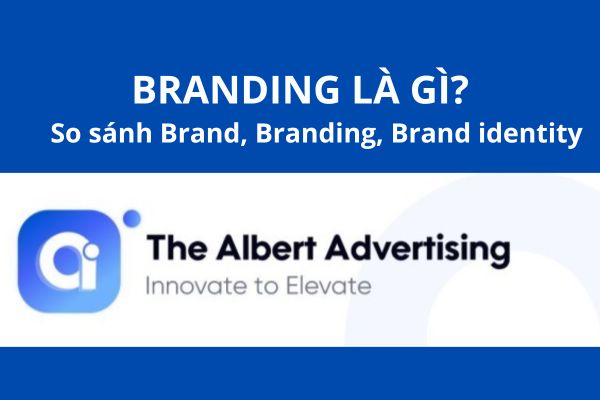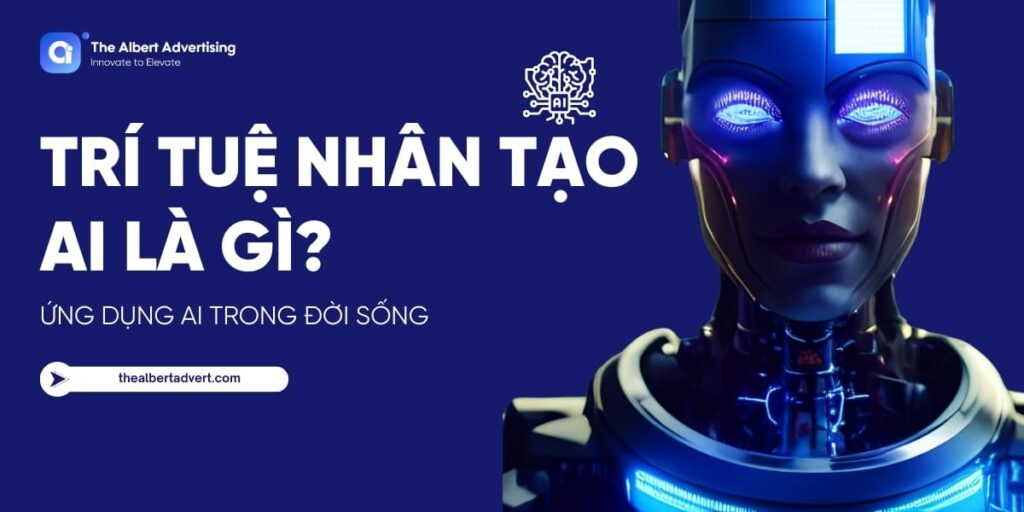SEO (Search Engine Optimization)has become one of the most important online marketing tools in today’s digital age. It not only increases visibility in search results but also helps build brand credibility and boost revenue for businesses. However, with the rapid advancement of technology and the constant changes in search algorithms, SEO is facing many new challenges. In this article, let’s explore an overview of SEO with The Albert Advertising, covering its principles, roles, challenges, and the latest trends.
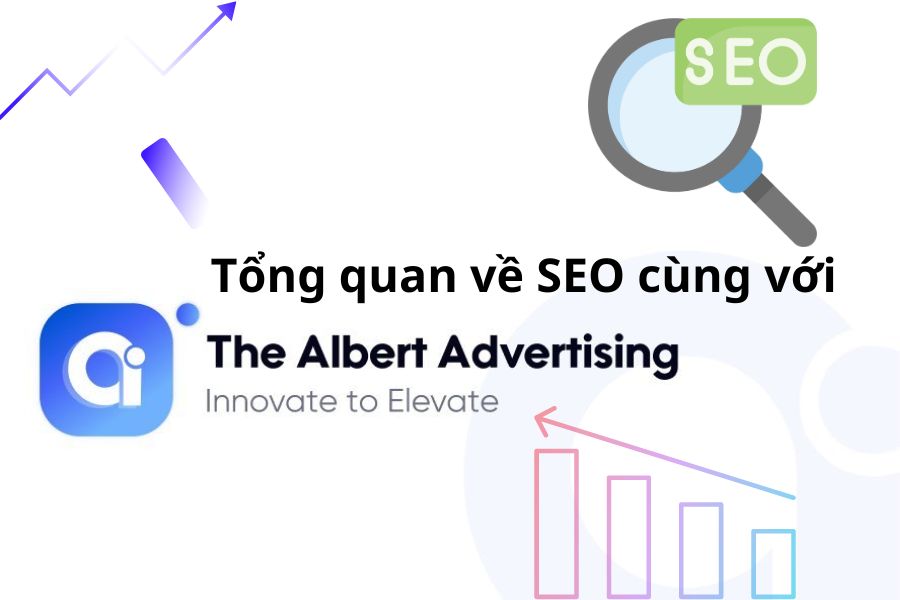
What is SEO?
SEO (Search Engine Optimization) is the process of optimizing the content, structure, and other elements of a website to improve its ranking in search engine results (such as Google, Bing, Yahoo, etc.). The main goal of SEO is to help the website appear as high as possible on the search engine results page (SERP) when users search for keywords related to the website’s content.
A well-optimized SEO website will help to:
- Increase high-quality traffic to the website
- Build credibility and brand reputation for the business
- Enhance the ability to reach potential customers
- Increase revenue and profit for the business
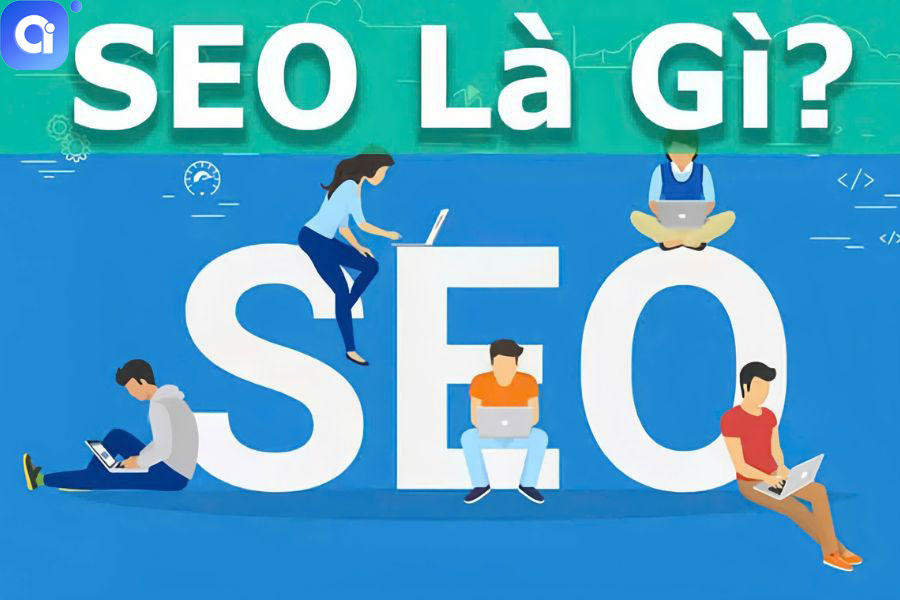
The latest forms of SEO
In recent years, SEO has continuously evolved with many new forms and techniques. Here are the three main SEO trends that are being widely applied:
SEO AI
AI SEO is the application of artificial intelligence (AI) in the process of website optimization. AI tools like machine learning and natural language processing (NLP) help SEOer analyze data and provide more effective optimization recommendations.
Artificial intelligence helps identify search trends, analyze user psychology, and create relevant content. The application of AI SEO not only saves time but also increases accuracy, enabling businesses to quickly capture user needs. For example, AI can help:
- Analyze and predict search keyword trends
- Automatically optimize content, titles, meta tags, etc.
- Detect and fix technical issues on the website
- Personalize content based on user behavior
- Provide content suggestions tailored to each user
Integrating AI into SEO increases accuracy, efficiency, and automates SEO activities, thereby saving time and costs.

SEO Branding
SEO Branding is the combination of SEO with online brand-building strategies. The goal of SEO Branding is to establish a strong brand presence in search results, thereby increasing brand recognition, credibility, and customer trust.
This strategy focuses on optimizing brand elements such as domain name, logo, and social media channels. A strong presence on social media also plays a key role in SEO Branding, helping to enhance brand awareness and build customer trust.
SEO Branding techniques include:
- Optimizing brand identity on the SERP
- Building high-value brand content
- Connecting brand communication channels (website, social media, video, etc.)
- Managing and developing brand profiles on websites and social media platforms
With SEO Branding, businesses not only increase website traffic but also build a strong brand presence on the internet.
SEO Traffic
SEO Traffic focuses on optimizing a website to attract high-quality traffic, thereby increasing the potential for customer conversions. To achieve this, thorough keyword research and the creation of engaging content are necessary to draw users in.
Backlink analysis is also crucial in SEO Traffic. Having numerous links from reputable sources will increase the credibility of your website, thereby improving its ranking in search results.
SEO Traffic techniques include:
- Researching and selecting keywords with high search volume and moderate competition
- Optimizing content and website structure to match target keywords
- Building high-quality backlinks from reputable, relevant websites
- Optimizing user experience (UX) to reduce bounce rate
- Leveraging other traffic channels such as YouTube, social media, etc.
With SEO Traffic, businesses will attract a steady flow of website traffic, thereby increasing customer conversion opportunities and boosting revenue.

Basic SEO Process
The basic SEO process includes 4 main steps:
Keyword research
The first step in the SEO process is researching and selecting target keywords. This is a crucial phase that determines the effectiveness of the subsequent SEO steps. The tasks include:
- Identifying keywords related to the company’s products or services
- Analyzing keywords: search volume, competition, conversion potential, etc.
- Selecting primary and secondary keywords that align with SEO objectives
Choosing the right keywords will serve as an important foundation for the following SEO steps.
Onsite optimization
After identifying the keywords, the next step is to optimize the onsite (on-page) elements to ensure the website is optimized for the target keywords. The main tasks include:
- Optimizing titles, descriptions, content, images, etc.
- Improving website structure, navigation, and page load speed
- Creating high-quality, valuable content for users
- Optimizing technical aspects such as responsiveness, schema, robots.txt…
Onsite optimization makes the website more search engine-friendly, thus improving its ranking on the SERP.
Off-page
In addition to onsite optimization, SEO also needs to focus on off-page activities, such as building high-quality backlinks. Backlinks are links from other websites pointing to the business’s website. Having many quality backlinks will help increase the website’s credibility and ranking on search engines. Off-page activities include:
- Building business profiles on reputable social media platforms and web directories
- Developing shareable content on online channels (blogs, forums, guest posts…)
- Exchanging and creating backlinks from related, high-quality websites
- Participating in PR and online marketing campaigns to attract backlinks
Monitoring and Analysis
Finally, the SEO process must be continuously monitored and analyzed to assess its effectiveness and adjust strategies accordingly. Analytical tools like Google Analytics, Google Search Console, etc., will help SEOs track important metrics such as traffic, effective keywords, and website rankings on the SERP.
Analyzing SEO data will enable better optimization decisions for the website in the future.
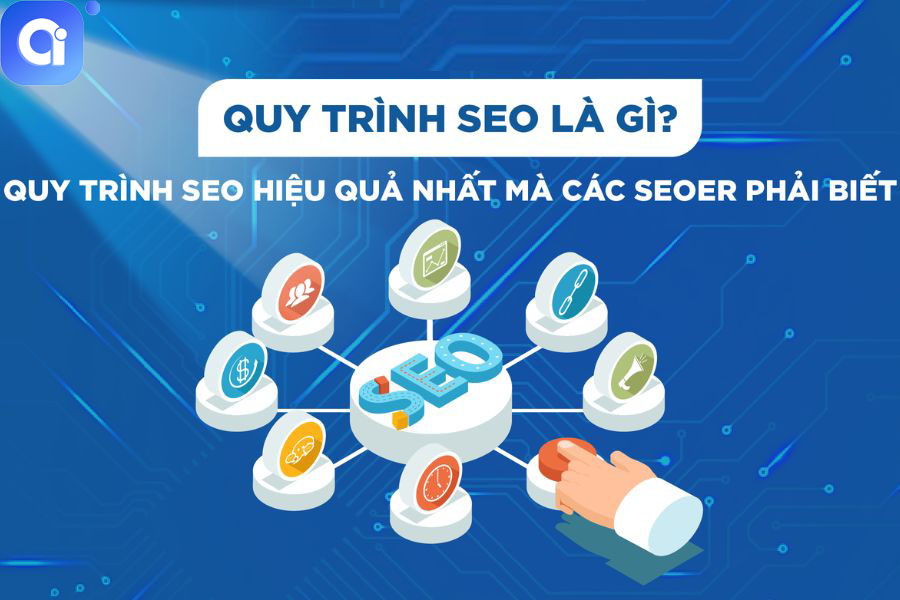
Essential Skills for SEO
To become a professional SEO specialist, a combination of the following skills is required:
Research Skills
This is the most important skill in the SEO process. An SEO specialist needs to have the ability to conduct in-depth research on keywords, competitors, and user search trends. Effectively gathering and analyzing data will help formulate appropriate SEO strategies.
Writing Skills
Quality content is one of the most important factors that influence SEO results. Therefore, an SEO specialist needs creative writing skills that captivate readers. They should be able to create articles, videos, infographics, etc., that attract potential customers.
Analytical Skills
After each SEO campaign, the SEO specialist must analyze data to evaluate effectiveness and make appropriate adjustments. Data analysis and the ability to interpret metrics are crucial skills.
Using SEO Tools
An SEO specialist needs to be proficient in using SEO tools such as Google Analytics, Google Search Console, Ahrefs, Semrush, etc., to gather and analyze data and implement effective SEO campaigns.

Comparison between SEO and Google Search Ads
SEO and Google Search Ads are two popular online marketing tools, both aimed at helping businesses increase their visibility in search results. However, these two tools have the following differences:
SEO:
- Establish a long-term and sustainable presence in search results
- No direct costs, but requires investment of time and resources
- Long-lasting results, dependent on content quality and backlinks
- SEO results are difficult to measure and control, as they depend on search engine algorithms
Google Search Ads:
- Quick display directly on the search results page
- Requires advertising costs, but the results are easy to measure
- Control over ad placement and content
- Short-term effectiveness, ends when the ad campaign stops
In practice, businesses often use both SEO and Google Ads to maximize online marketing effectiveness. SEO helps build a sustainable foundation, while Google Ads delivers quick results.
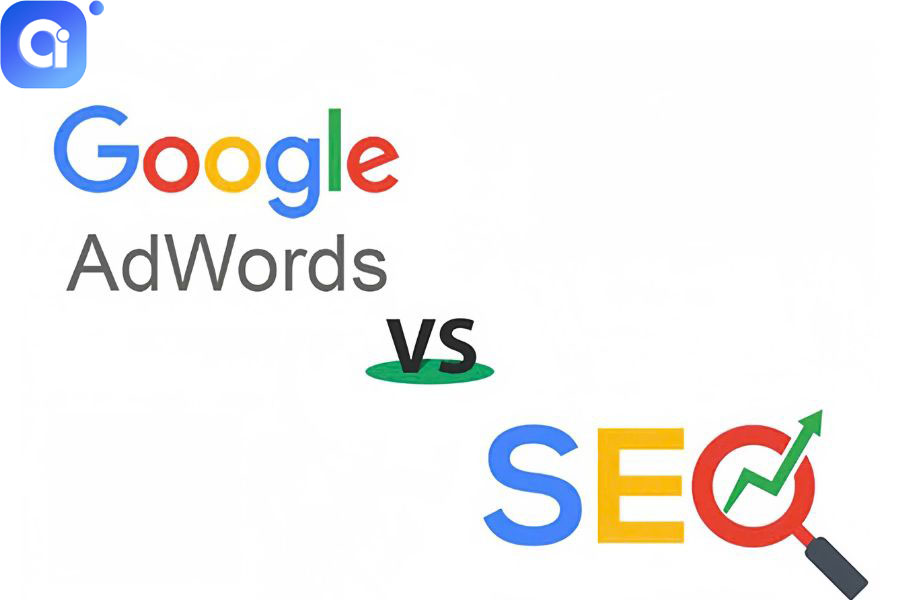
Latest SEO Trends
In the rapidly changing technological landscape, SEO is continuously evolving with many new trends. Here are three notable SEO trends:
Content Hub
A Content Hub is a strategy for building a large, comprehensive system of content around a central topic. Instead of creating many independent articles, businesses focus on building a high-quality content ‘hub’ that is closely interconnected.
Advantages of a Content Hub:
- Improves rankings and visibility on search results pages
- Enhances average time on page and reduces bounce rate boosts user engagement and interaction through valuable content.
Developing a Content Hub not only benefits SEO but also makes it easier for users to discover related content. Businesses can provide a seamless experience when users search for information, thereby effectively improving customer retention.
Visual Search
Another rising trend in the SEO field is Visual Search. Today’s users increasingly prefer searching with images rather than text. We see tools like Google Lens and Pinterest Lens becoming popular choices for those looking to explore information through images.
This presents new opportunities for businesses and marketers. To leverage this trend, websites need to optimize their images by using detailed descriptions, alt tags, and proper image formats. Additionally, content should be presented in the form of useful images or videos for users, thereby improving rankings in visual search results.
Entity Layer
The concept of the Entity Layer relates to how Google understands and categorizes information in articles. Accordingly, not only keywords but also entities—such as brands, celebrities, locations, etc.—need to be emphasized in the content.
When creating content, SEOs should aim to identify and leverage entities that are closely related to the overall topic. These entities help Google ‘understand’ the content better and provide the search engine with different perspectives, thereby improving visibility on the SERP.
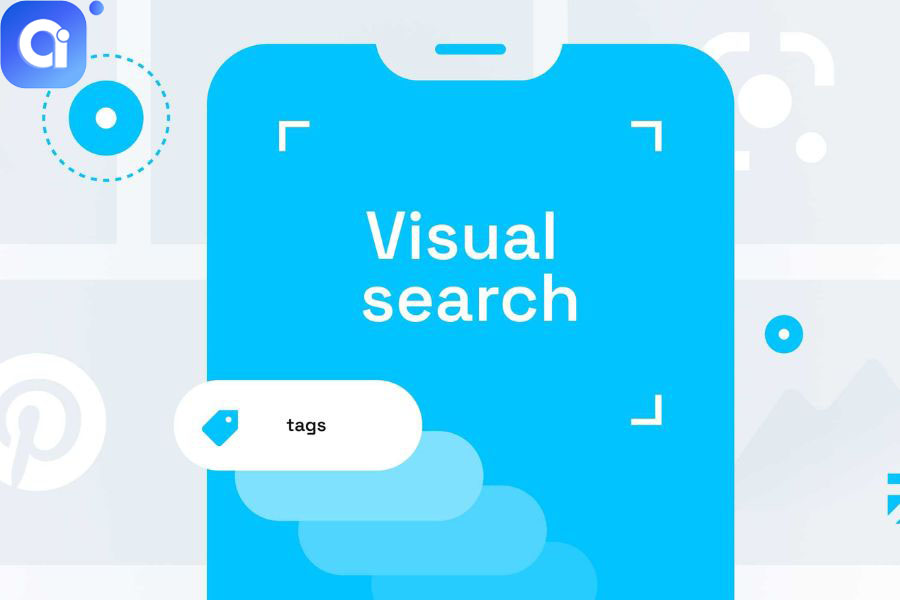
Google Algorithms that SEOs Need to Know
Mastering Google algorithms is crucial to enhancing an SEO strategy. Here are some notable algorithms that SEOs should be familiar with:
Panda Algorithm
The Panda Algorithm was first introduced in 2011 to assess the content quality of websites. It penalizes pages with low-quality, duplicate, or thin content by removing them from top search results. This makes the development of valuable and unique content more essential than ever.
SEOs need to regularly review and improve website content, ensuring it is genuinely useful and provides value to readers. Creating long-form, high-quality, and reliable content will help improve rankings on Google.
Penguin Algorithm
Launched in 2012, Penguin primarily focuses on penalizing websites that engage in spammy backlink practices. This emphasizes the importance of building natural links that provide value to users.
SEOs should note that not all backlinks are equal. Backlinks from high-quality sources will have a better impact compared to a large number of low-authority links. Creating quality content and actively participating in relevant communities will help attract natural links.
Hummingbird Algorithm
Hummingbird, launched in 2013, represents a major shift in how Google processes search queries. With this algorithm, Google not only matches keywords but also better understands the semantics and context of the query.
To adapt to Hummingbird, SEOs need to think more deeply about content, focusing not only on keywords but also on how to accurately answer the specific questions users are searching for. Providing high-quality content that addresses specific informational needs will be the key to success.
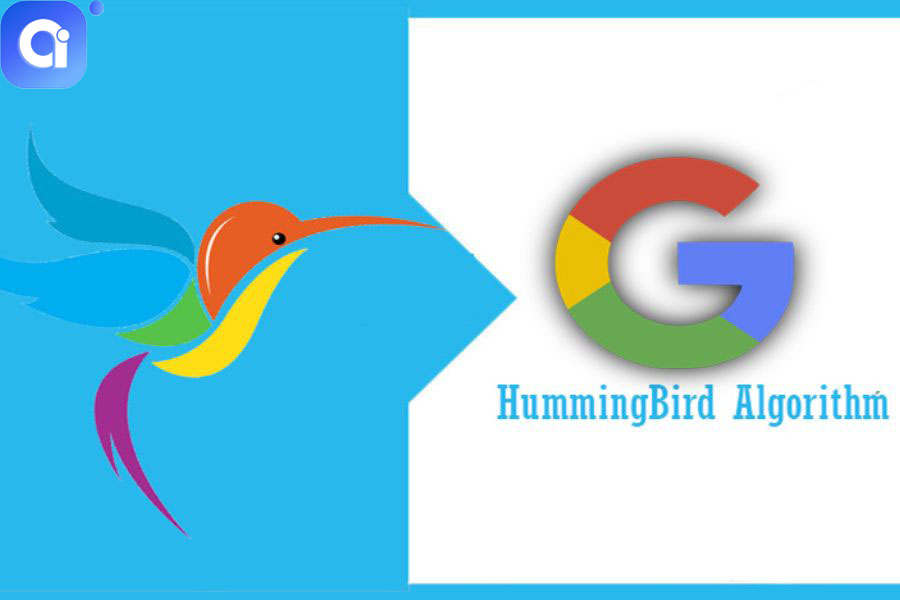
Pirate Algorithm
Chắc chắn nhiều SEOer từng nghe đến thuật toán Pirate. Được phát hành vào năm 2012, mục tiêu chính của thuật toán này là giảm thứ hạng của những trang web vi phạm bản quyền. Nếu doanh nghiệp sở hữu nội dung bản quyền nhưng lại bị cáo buộc về vấn đề sao chép hay vi phạm bản quyền, thứ hạng trên SERP sẽ bị tác động nghiêm trọng.
Đảm bảo rằng nội dung của bạn hoàn toàn nguyên gốc, không sao chép từ bất kỳ nguồn nào. Cung cấp thông tin đào sâu và độc đáo để tránh rơi vào vòng tay của thuật toán Pirate.
Pigeon Algorithm
Many SEOs have likely heard of the Pirate algorithm. Released in 2012, its main goal is to lower the rankings of websites that violate copyright. If a business owns copyrighted content but is accused of plagiarism or copyright infringement, its ranking on the SERP will be severely impacted.
Ensure that your content is entirely original and not copied from any source. Provide in-depth and unique information to avoid falling victim to the Pirate algorithm.
Mobile-Friendly Algorithm
As the name clearly suggests, Mobile-Friendly focuses on optimizing the experience for mobile users. With the significant increase in mobile users, Google wants to ensure that every website is responsive and user-friendly on these devices.
Therefore, having easily readable content, large buttons, and fast page loading speed is essential. In particular, using responsive design plays a crucial role, helping the website remain optimized for both desktop and mobile users.
RankBrain
Developed in 2015, RankBrain is a part of the Hummingbird algorithm. It uses artificial intelligence to learn and determine how users interact with search results. RankBrain tracks click-through rates and the amount of time users spend on a page before ranking search results.
To optimize for RankBrain, content must be as engaging and responsive to the reader’s needs as possible. High-quality content will keep users on the page longer and lead to more link clicks, thereby improving ranking.
Possum Algorithm
Launched in 2016, Possum primarily improves local search rules, making searches faster and providing more diverse results. This algorithm filters results based on the user’s location.
Therefore, businesses need to keep their contact information updated and actively manage customer reviews and feedback. Improving the quality of services and products will help score points with Possum.

Some Frequently Asked Questions about SEO
During the process of learning about SEO, many people often have common questions. Below are some questions and answers related to SEO.
Does SEO take a lot of time?
SEO is a long-term process, and it usually takes time to see results. However, if you apply the right methods and strategies, you will notice positive changes in the not-too-distant future.
Do you need experience to do SEO?
Although having experience can make SEO implementation easier, not everyone needs to have deep expertise. You can start with basic knowledge and gradually improve your skills through practice.
Can I learn SEO on my own?
Yes, you can absolutely learn SEO on your own through resources, online courses, and practicing on your own website. Self-learning will help you grasp the knowledge and apply it in a flexible way.
Where should I start if I want to learn SEO?
If you’re just starting out, begin by learning the basic concepts of SEO, then move on to keyword research and practice optimizing content on your own website. Additionally, join SEO communities to exchange ideas and learn from those with experience.
Conclusion
In summary, SEO is an essential process that requires investment in both time and effort to excel in the online market. Knowledge of different types of SEO, basic processes, and Google’s algorithms helps businesses implement the best strategies. Through content optimization, building quality backlinks, and regularly assessing performance, SEOs can help websites achieve higher rankings in search results.
